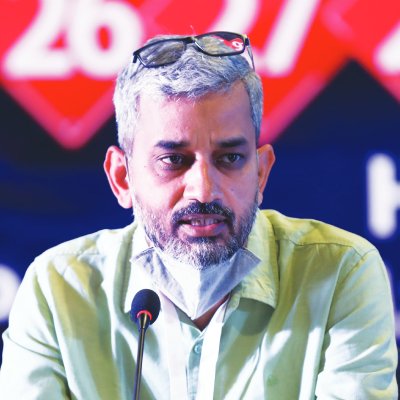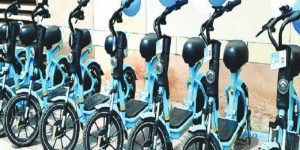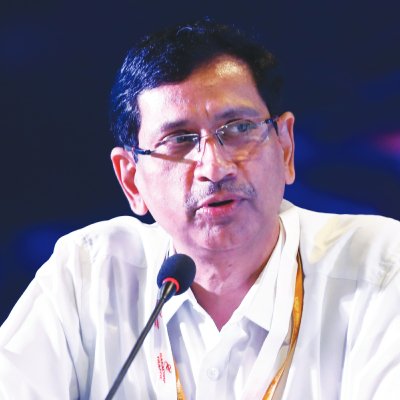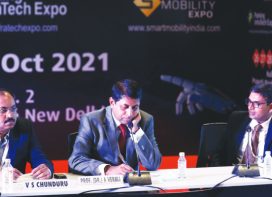With an increasing population and rising demands, there is an immediate need to strengthen public transport systems across the country. From providing last mile connectivity to integrating electric infrastructure, all points were discussed at our Expo panel this October.
India is a country that is deeply dependent on its public transport system. Delhi has the highest car usage in the country but still represents only a fraction of the city’s population. Almost 85% of the city uses some form of public transport.
This showcases the need for further improvement and collaboration in the public transport sector, which comes with its own set of challenges. We look at a few of these key subjects that were discussed at the panel.

We know that for sustainable development, mobility is the key. Growth and prosperity have gone hand in hand with urbanisation because cities are the engines of growth. And if cities are the engines of growth, then transport is the wheel to that vehicle.
–Amit Bhatt, Director, Integrated Urban Transport, WRI India
Metros and Last mile connectivity
Metro construction is going full speed in over 40 cities across the country. It is deemed to be an integral step in connecting different parts of a city, while offering better services and facilities as compared to other modes of transport.
In terms of connectivity, usually there is integration with larger transport modes. In Lucknow, there is direct connectivity to the airport, ISBTs and Railways stations. In Kanpur, there is an MOU with all transport agencies like OLA, Uber, Rapido, and WOW, with facilities for 2-wheelers and 4-wheelers at the stations.
But last mile connectivity from the traveller’s home to the metro is a large concern. This is where the distinction between Tier 1 and Tier 2 cities comes up.
In Delhi, the network has expanded from 60km to 387km. This form of expansion is not required in Tier 2 cities, where 35 km would be sufficient to cover the entire city. Another concern is peak hour load. In larger cities, people are coming from the outskirt for work, and there are clearly defined peak times. In tier 2 cities, the amount of traffic is consistent through the day, with no clear peaks.
So a person who needs to take some form of transport to get to a metro station, is more likely to continue in the same form of transportation to their destination. In smaller cities, the distance that one must travel to work is much lesser, which reduces the usage of metro.
To change this conversation, Delhi Metro Rail Corporation (DMRC) has started running their own transportation for last mile connectivity in the form of e-rickshaws and e-buses. They have recently deployed 25 electric low-floor buses to provide feeder services to the commuters. Another 75 are to be added, and a total 100 electric buses should be operational by December to offer last mile connectivity. But even then, it is catering only to 5% of commuters. When combined with buses and scooters, about 1.5 lakh passengers are using these last mile connectivity services. The DMRC is looking to expand this and grow ridership.
The consensus at the discussion was that unless there is an understanding about the decision making of the user, unless there is more data, last mile connectivity is still going to be a struggle over the next few years.

DMRC is attempting multi-modal integration at the stations. We realised that infrastructure was not available for multi-modal services like rickshaw lanes, NMV lanes and parking. So everything had to be redesigned for almost 100 stations, with civil work being undertaken for auto lane, taxi lanes, special parking places for feeder buses.
–Saleem Ahmad, Executive Director, DMRC
Integration of facilities
The need is for an integrated solution that can handle all your travel requirements. Unified Metropolitan Transportation Authority (UMTA) was brought up at the discussion regarding the significant challenges that exist with its execution.
The concern with any integrated solutions like UMTA is the number of organisations that are involved. You need collaboration between the district administrative offices, police departments, transport departments, different transport unions, parking operators, implementing agencies and the municipalities. There are issues when it comes to the different sets of rules and regulations that exist, as they might not work with each other.
The solution offered was to create five levels of integration within the system. First, is Institutional integration where agencies are created that can plan all the systems together. Second, is Infrastructure integration. A metro and a bus might exist, but it is about bringing them together in a consolidated manner. Third, is Service integration. If the metro drops you at a point, will you get bus service at that time. Fourth, Fare integration. You should be able to pay once and use multiple modes of public transport. Fifth, Fare mechanism integration, where you can use the same card or token to pay at multiple levels of transport. Often the systems are planned in isolation, and these five integrations are required.

In a 24-hour day, you’re driving for less than 2 hours. So the car is parked more than 90% of the time and that car has to be parked somewhere. Typically if there is no personal parking space available, people are going to park on the road and create congestion.
–Aditya Bhave, Director, Klaus Multiparking Systems Pvt Ltd

Parking
Parking is a major concern for public transport in two forms – last mile connectivity and road congestion.
The lack of last mile connectivity often forces the passengers to take their private vehicle to their destination. Due to a lack of parking facilities at metro stations, the passengers often complete their entire journey in one mode of transport. If parking facilities were created at Metro stations, it could significantly reduce the number of cars on the road and impact road congestion.
Parking systems can play a big role in congested cities where land is scarce and expensive. On the footprint of 3-5 cars, a tower system can be created to house 40-100 cars. The number of cars depends on which system is implemented. This will help last mile connectivity, as the passenger can drive their car to the metro, park it without the risk of any theft or damage, and travel by metro to their final destination. To this effect, DMRC is working on intelligent parking systems for their metro stations wherever possible.
But there will still be a need to enforce parking norms, to dissuade people from parking on the streets or double parking. Roadside parking aggregators and software are required to maintain this. This was posed as question to understand what can be done.
For parking violation detection, there is a pilot program being run in Indore. This uses IoT devices and cameras to identify parking encroachment. Infrastructure vehicle which are on the road every day, like solid waste vehicles, are fitted with devices that take visuals of the road. Using AMPR software capabilities, they try to identify how long a vehicle has been standing, identify the car number, and create a challan for the same. Data is being collected on this program to see the efficacy and real-world implementation.

On the point of data, we are constantly analysing how people are moving. We came to know that a cluster of students move to the market area at 2pm after their classes. After that they go for coaching at a station nearby. So how do we engage them so that they don’t go to the market area? How do we bring more students? We organised different events from 2 to 3 PM – a live FM studio at the stations, a dance program, a music program or even a book exhibition. We planned all these activities to make sure those students remain at the station, spend the time, travel from one station to another. And this led to an increase in ridership by almost 13%.”
–Sushil Kumar, Director Operations, Uttar Pradesh Metro Rail Corporation
The Importance of Data
Data was the word of the moment and for good reason. The conversation of strengthening public transport cannot occur without gathering data and finding ways to improve the systems.
Understanding passenger travel, their habits, the changes based on days and festivals, journey planning, requirements and even parking requirements, is vital in planning the next steps. The differences seen in Tier 1 and Tier 2 cities is emblematic of how unique data can be. Data gathering and analysis offers public transport operators with the facility to plan their rostering, timetables, and operating their fleets in an optimised manner.
There are concerns with data as well, because often hardware is procured without proper implementation and utilisation of data. Policy framework and research might be required in this domain. Data cannot be examined in isolation and requires coordinated effort for optimising public transport.

In India, the roads or public transport operations are mainly for middle class or poor people. We must aim for public transport operations to be utilised by the rich. Only then can we generate more revenue from this particular avenue, while addressing the environmental and safety concerns that exist in larger cities
–Mihir Dakwala, Head – Data Science and Machine Learning, Amnex Infotechnologies
World of Electric
The shift to electric is becoming more pronounced with new legislation and government incentives. With that in mind, DMRC is focusing on electric vehicles. Along with the 100 electric feeder buses that are being introduced, they are also looking to launch 15,000 electric auto-rickshaws from their stations. Currently there is a cap on the number of rickshaws that can be registered in Delhi, but DMRC is hopeful that they
will get permission from the Supreme Court.
These e-rickshaws are operating from 59 stations and are run by the DMRC. They have finalised two aggregators to run all these rickshaws, which will be app-based. Along with the buses, this allows DMRC to truly achieve last mile connectivity from the metro stations. They are also trying to get e-scooters into the system.
Electric charging in the parking spots is also a requirement, and this can fit into the parking facilities at metro stations. With integrated electric charging in your parking systems, you can leave your car on charge for the time that you spend at work. When you return back via the metro, you find a fully charged car. You can also monitor the metering and consumption through app-based facilities.
In conclusion
The questions and solutions that arose in this discussion showcased the need for a coordinated effort between different public and private organisations that can leverage data to create more optimal travel for the passenger.
 TrafficInfraTech Magazine Linking People Places & Progress
TrafficInfraTech Magazine Linking People Places & Progress


